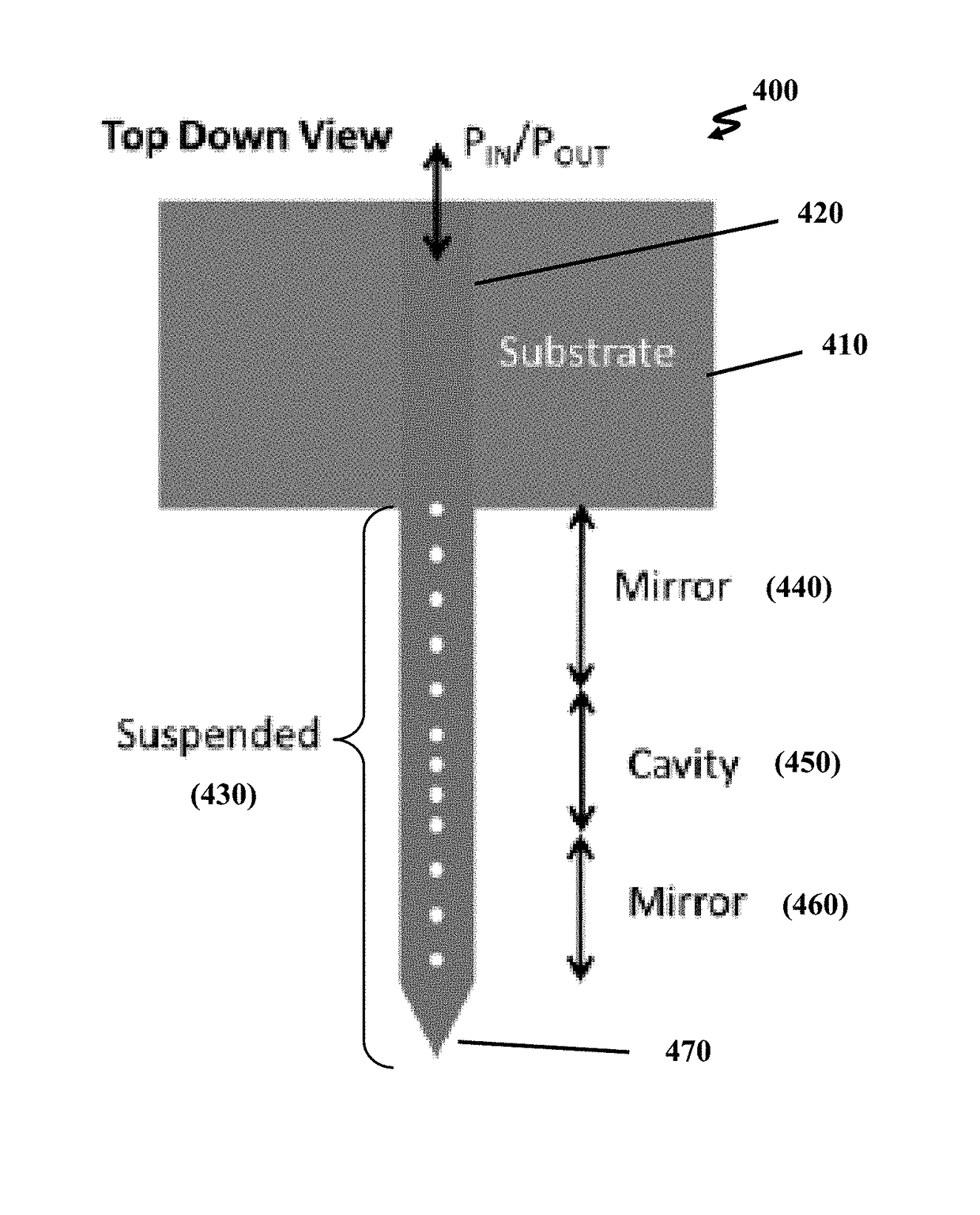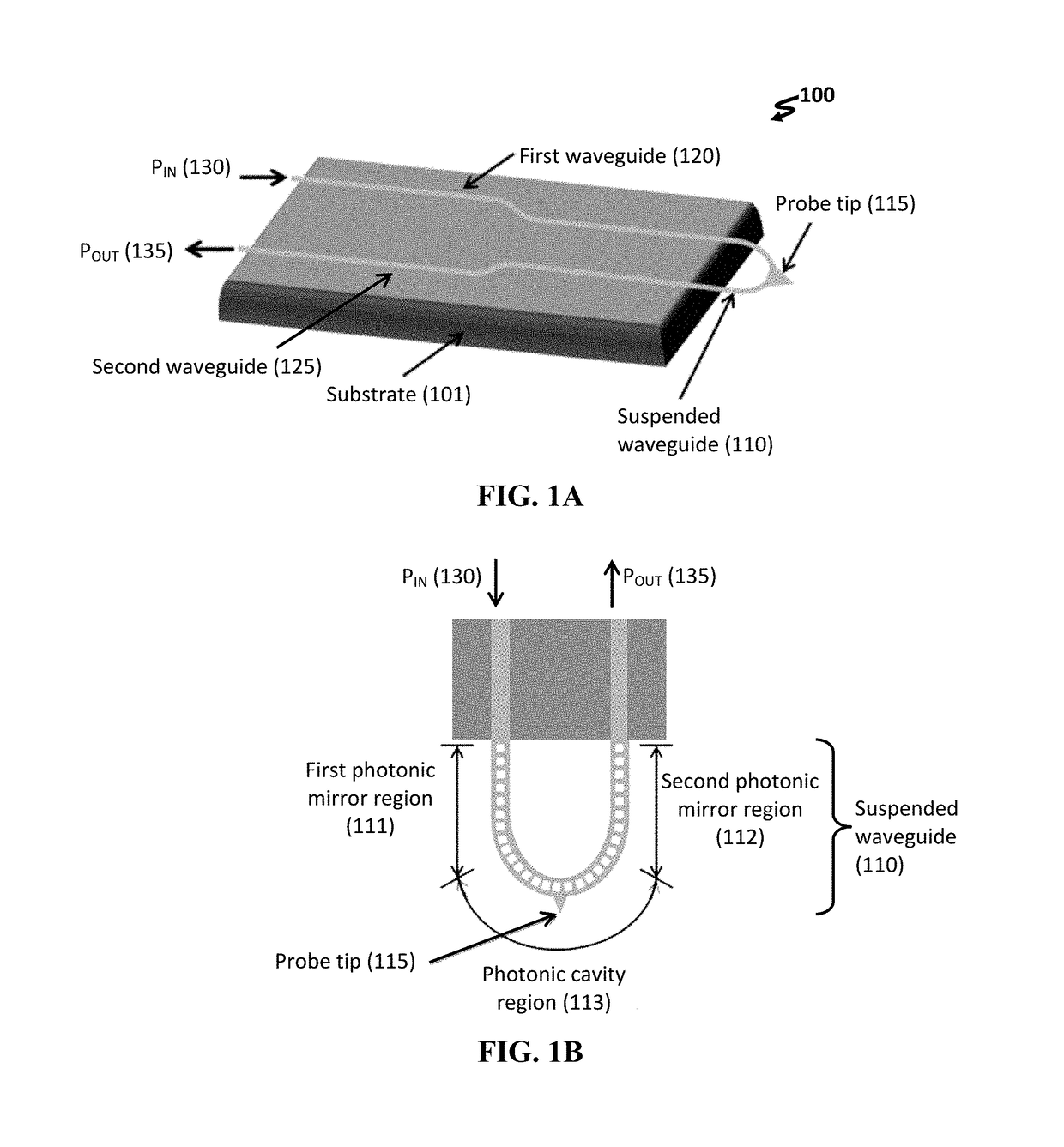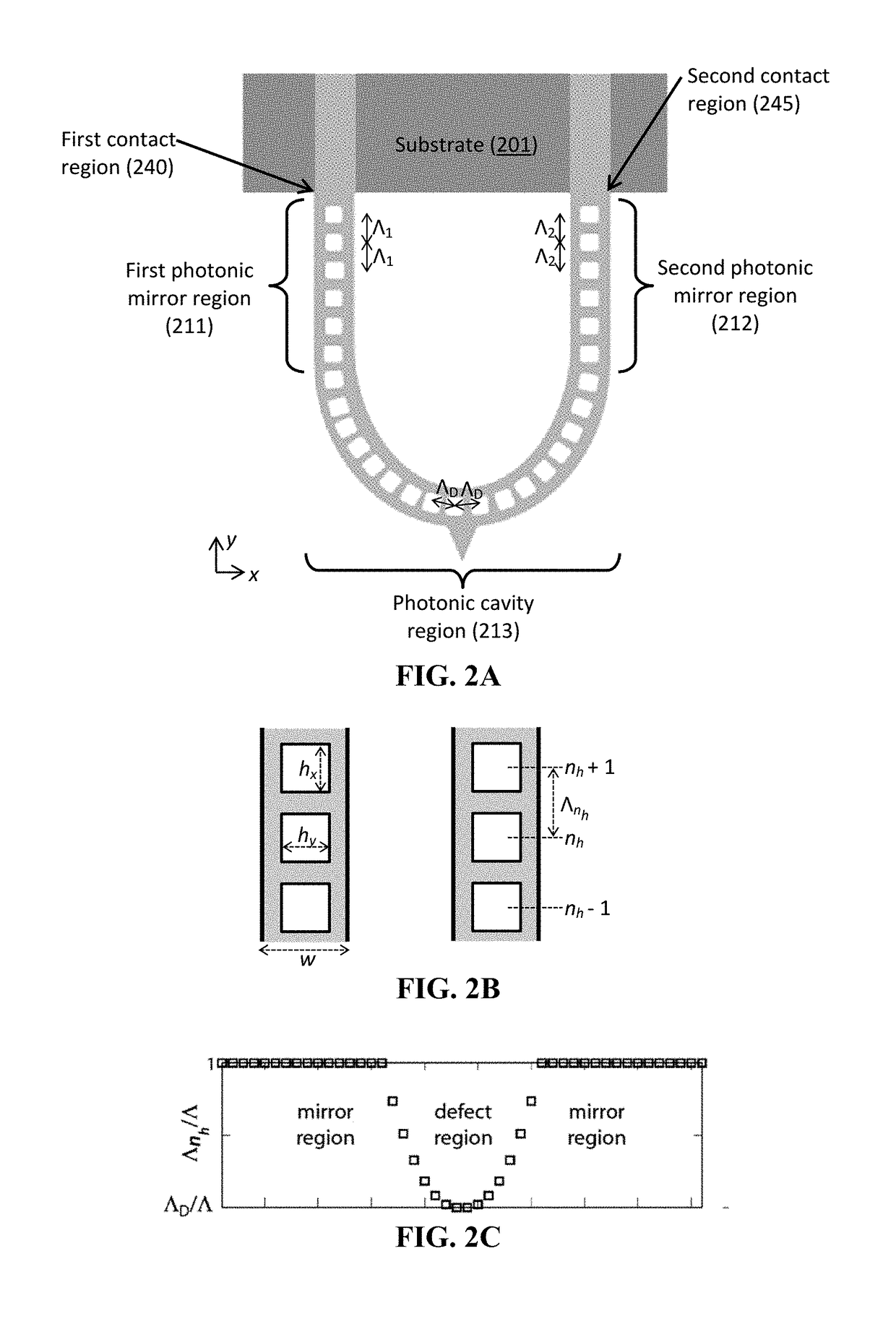Optomechanical force sensors, cantilevers, and systems thereof
a technology of force sensors and cantilevers, applied in the field of optomechanical force sensors, can solve the problems of large shifts in the resonant frequency of the system, optical sensitivity will decrease, and the mass cannot be decreased indefinitely, so as to reduce the time required to measure large areas, enhance the sensitivity to mechanical deflection, and enhance the dynamic range
- Summary
- Abstract
- Description
- Claims
- Application Information
AI Technical Summary
Benefits of technology
Problems solved by technology
Method used
Image
Examples
example 1
[0081]A single-mode waveguide is defined on the device layer of a silicon-on-insulator (SOI) substrate. With reference to FIG. 1A, the silicon waveguide-based device 100 delivers a power input PIN from a coupled, external light source to the suspended waveguide 110.
[0082]The use of on-chip waveguides on SOI allows for easy integration with standard v-groove couplers, enabling robust, precise alignment into and out of the device, regardless of device orientation, i.e., vertical or horizontal orientation.
[0083]Where the single-mode waveguide approaches the end of the SOI chip, a photonic crystal is defined on the section of waveguide that is freestanding over the edge of the SOI (FIG. 1B). This photonic crystal has two identified regions: a cavity region 113 that is located in closest proximity to the location of the probe tip 115, and bordering the cavity region on either side, a pair of mirror regions 111, 112. The nature of the overhanging photonic crystal allows for unrestricted m...
example 2
[0096]With reference to FIG. 4, an alternative design concept 400 places the optical cavity within a single rectilinear cantilevered beam instead of within a half-loop. This decreases the number of attachment points where the cantilevered beam is anchored to the substrate, and it invites the application of standard cantilevered beam fabrication techniques. As a consequence, the complexity of the design is reduced, simplifying both the fabrication and the integration of the optomechanical sensor device.
[0097]As seen in the figure, the cantilever structure includes substrate 410, input-output waveguide 420 formed on substrate 410, and suspended waveguide 430 conformed as a cantilevered beam, such as a rectangular beam, that extends rectilinearly from the substrate and has a single anchor. Waveguide 420 is a bidirectional waveguide having a single end for the injection of input light and the emission of output light.
[0098]Suspended waveguide 430 contains mirror region 440, optical cavi...
PUM
 Login to View More
Login to View More Abstract
Description
Claims
Application Information
 Login to View More
Login to View More - R&D
- Intellectual Property
- Life Sciences
- Materials
- Tech Scout
- Unparalleled Data Quality
- Higher Quality Content
- 60% Fewer Hallucinations
Browse by: Latest US Patents, China's latest patents, Technical Efficacy Thesaurus, Application Domain, Technology Topic, Popular Technical Reports.
© 2025 PatSnap. All rights reserved.Legal|Privacy policy|Modern Slavery Act Transparency Statement|Sitemap|About US| Contact US: help@patsnap.com



